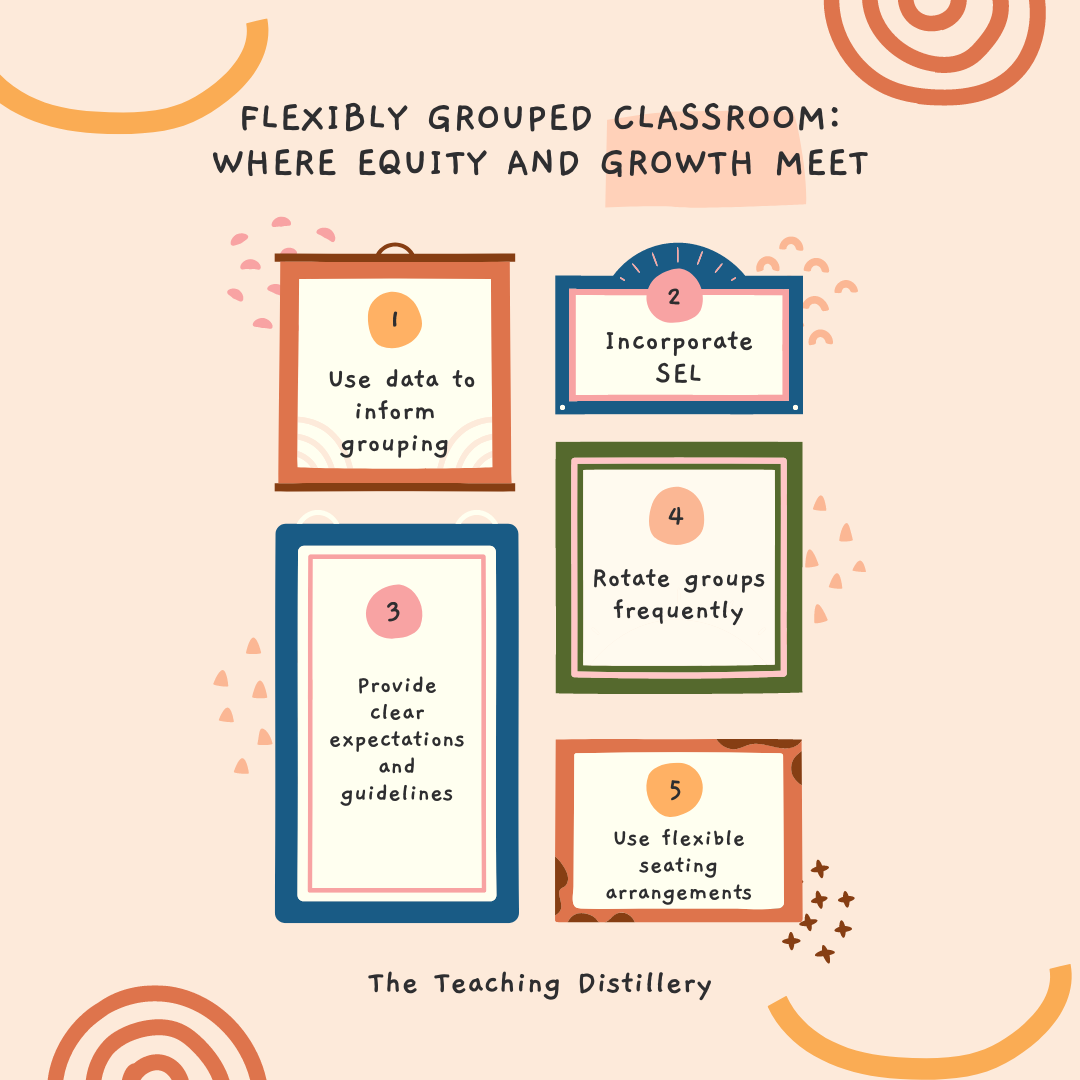Flexibly Grouped Classroom: Where Equity and Growth Meet
Are you tired of seeing the same students always answering questions and leading discussions in the classroom, while others struggle to keep up? Do you want to create a learning environment where every student has a chance to shine and grow?
Enter the Flexibly Grouped Classroom, where students are grouped based on their individual needs, strengths, and interests. This innovative approach, discussed by author Kristina Doubet, in her book The Flexibly Grouped Classroom: How to Organize Learning for Equity and Growth, helps guide teachers to organize their classroom to promote equity, inclusion, and growth for all learners.
Gone are the days of fixed seating charts and the one-size-fits-all approach to instruction. With flexible grouping, students are placed in groups that change regularly and are based on a variety of factors such as readiness, interest, and learning style. This allows students to collaborate with peers who have similar needs and challenges, and to receive personalized instruction that meets their unique needs.
But wait, there's more! Flexibly grouped classrooms also encourage social-emotional growth and development. Students learn to work with a variety of peers and build relationships across different groups. They also develop empathy and understanding for others who may have different needs and backgrounds.
In a flexibly grouped classroom, every student has a chance to shine and grow. No more hiding in the back of the classroom or feeling left behind. With personalized instruction, collaborative learning, and a focus on social-emotional development, students can reach their full potential and become lifelong learners.
Here are some strategies to help you implement flexible grouping:
1. Use data to inform grouping: Use formative assessments to determine where each student is in their learning, and group students with similar needs and strengths together. This can help you tailor your instruction to meet each student's individual needs.
2. Rotate groups frequently: To ensure that students are getting exposure to a variety of peers and learning styles, rotate groups frequently. This can also help prevent students from feeling left out or excluded from certain groups.
3. Use flexible seating arrangements: Pairing flexible grouping with flexible seating arrangements can provide a more dynamic learning environment. Try using different seating options, such as standing desks or floor cushions, to help students feel more comfortable and engaged in their learning.
4. Provide clear expectations and guidelines: Be sure to provide clear guidelines for group work and expectations for behavior during flexible grouping. This can help students stay on task and maximize their learning opportunities.
5. Incorporate social-emotional learning: Flexible grouping can also provide opportunities for social-emotional learning. Encourage students to work together to solve problems, practice active listening, and develop empathy for their peers.
By implementing flexible grouping strategies in your classroom, you can create a more inclusive and personalized learning experience for your students. As a bonus, in a flexibly grouped classroom, every student has a chance to shine and grow. No more hiding in the back of the classroom or feeling left behind. With personalized instruction, collaborative learning, and a focus on social-emotional development, students can reach their full potential and become lifelong learners.
So what are you waiting for? Say goodbye to the old, fixed way of doing things and embrace the Flexibly Grouped Classroom. Your students will thank you, and you'll see growth and equity in action!
